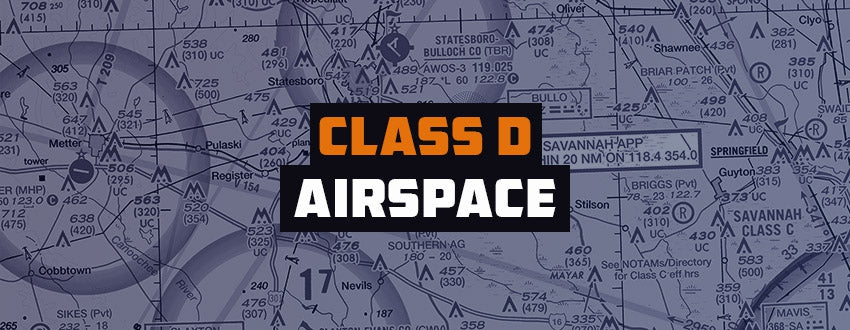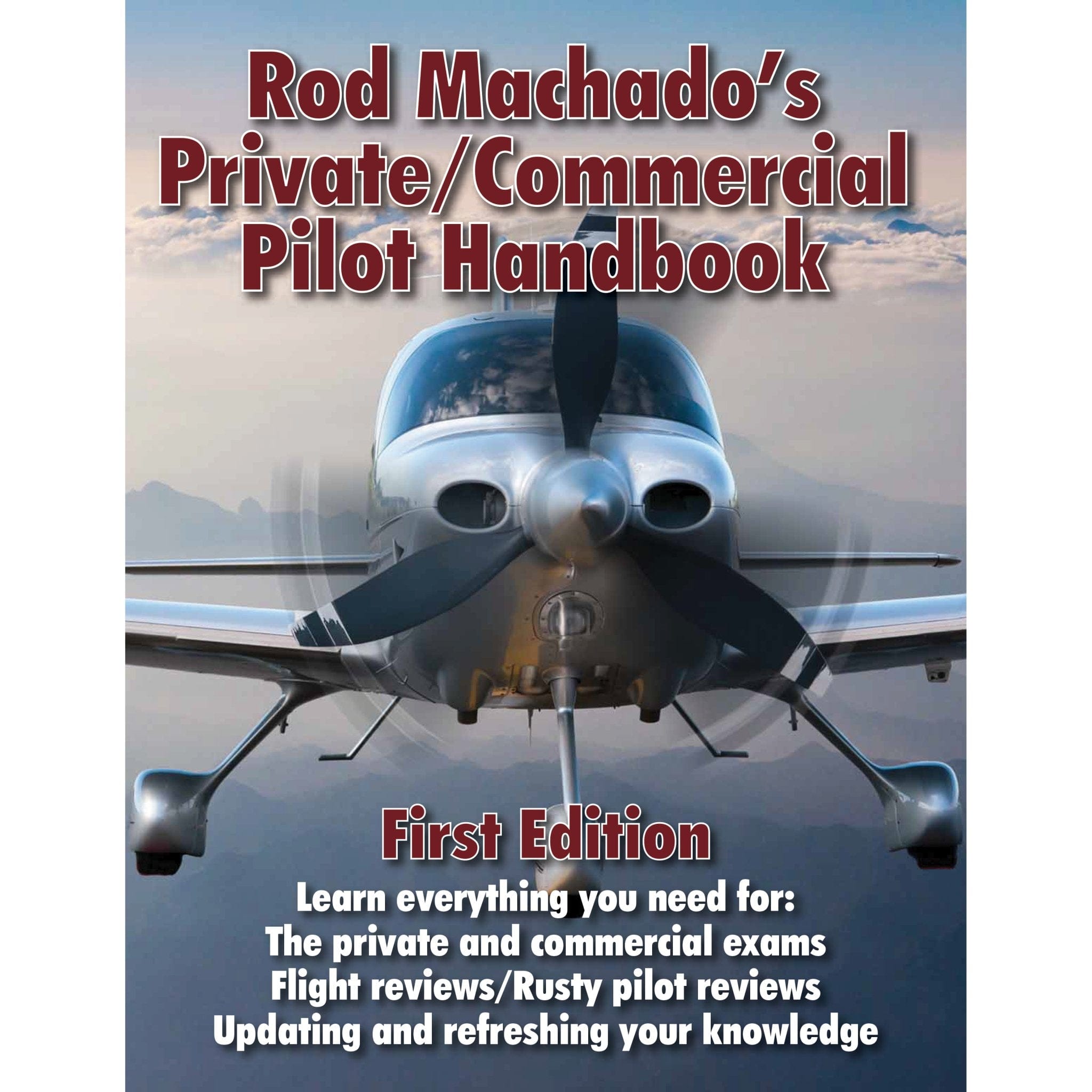As a pilot flying out of a smaller airport just big enough to have a control tower, you will quickly become familiar with Class D airspace. This type of airspace is one that most general aviation pilots will encounter and need to be well-versed in.
Requirements for flying in a Class D airspace are relatively minor and obtaining approval to enter is also very simple once you know what to do. To prepare for flying in Class D airspace, simply learn what Class D airspace is, where it is located, what the operational requirements and restrictions are, and how to get approval to enter.
Once you have learned those key points and practiced what to say and listen for on the radio, you will be well on your way to a smooth flight within Class D airspace.
What is Class D airspace?
Class D or Class Delta airspace is one of the six classes of controlled airspace. The FAA defines Class D airspace saying, “Generally Class D airspace extends upward from the surface to 2,500 feet above the airport elevation (charted in MSL) surrounding those airports that have an operational control tower.
The configuration of each Class D airspace area is individually tailored and when instrument procedures are published, the airspace will normally be designed to contain the procedures.”
The difference with Class D airspace as opposed to Class B or Class C airspace is that the primary airport in Class D has a control tower and provides weather reporting but does not provide radar services.
Note: While an operating control tower usually is indicative of at least a Class D airspace, there are a few airports with operating control towers that are not considered Class D because they do not provide weather reporting services.

How to know where Class D airspace is located
Class D airspace is typically found surrounding small airports that have a control tower but do not offer radar services. This category of airspace always begins at ground level. It is indicated on charts with a dashed blue line. The upper limit of Class D airspace is relayed in increments of 100 feet above sea level and is displayed in a dashed blue box.
For example, an elevation of 2,500 feet above sea level would read as 25 MSL. Class D airspace is most often found starting at the surface and extending up to and including 2,500 feet within a radius of 5 statute miles from the primary airport.
If there is no higher class of airspace above it, Class D airspace extends through its published ceiling, so in this example, 2,500 feet would be considered Class D airspace. Usually the airspace above Class D is the Class E transition area.
If Class D airspace is located below a higher class of airspace (A, B, or C)
The ceiling number on the chart will be preceded by a “- ” indicating that Class D extends to but does not include the ceiling number. For example, in this case, a ceiling of -25 means that Class D airspace stops at 2,499 feet and a new class starts at 2,500 feet.
Sometimes Class D airspace surrounds an airport that has a part-time tower. In this case, when the tower is operational, the airspace is considered Class D and must be treated as such.
When the tower is non-operational, the Class D space reverts to a Class E surface area or to Class G airspace. Check the chart supplement for the airport listing which will state that it is a part-time Class D airfield. This listing will also advise what class the airspace and surface area revert to when the tower is not in operation.

The shape of Class D airspace is usually a cylinder around the airfield, however Class D airspace fits around surrounding airspace, so the shape of the other airspace can also affect the shape of the Class D airspace.
Depending on the surrounding terrain and other unique features, you may also see Class D extensions. The size of Class D airspace and its extensions is based on a 200 feet per nautical mile climb gradient. Class D extensions are add-on pieces of Class D airspace that are attached to and jut out from the main Class D airspace circle.
Extensions are generally established to protect IFR traffic by covering a departure path along rising terrain or an instrument approach. If all extensions are 2 miles or less in length, they will be part of the Class D surface area. If any of the extensions reaches over 2 miles from the main Class D airspace, that extension and all other extensions will then be categorized as Class E.

Requirements of Class D airspace
Like other classes of controlled airspace, the FAA outlines specific requirements for flying in Class D airspace. While in areas designated as Class D airspace, pilots must:
- Adhere to Class D weather minimums
- Have a functional two-way radio onboard
- Establish two-way ATC radio communication prior to entering the airspace
- Maintain two-way communication with ATC while in the airspace
- Follow speed restrictions

Restrictions in Class D airspace
Pilots operating in Class D airspace are bound by the following restrictions:
- No Mode-C transponder required
- Minimum visibility requirements of 3 statute miles
- Cloud clearance minimums are 500 feet below, 1,000 feet above, and 2,000 feet horizontally
- No VFR flights if ceiling is less than 1,000 feet AGL
- Must request and obtain special VFR (SVFR) clearance to fly VFR when conditions are below minimums. If approved, pilot will need to remain clear of clouds and maintain a minimum of 1 statute mile of visibility.
- Speed limited to 250 knots when flying below 10,000 feet MSL
- Speed limited to 200 knots when flying at or below 2,500 feet AGL and within 4 nm of the primary Class D airport in the airspace
How do I get approval to enter Class D airspace?
The FAA requires that all aircraft obtain ATC approval prior to entering Class D airspace. Approval is given by the ATC facility that provides ATC services for the designated airspace. This is usually the local tower at a controlled airport. If the airport you are taking off from or landing at is uncontrolled, you will instead be contacting whichever ATC facility controls the space.
Plan ahead and initiate your contact with ATC soon enough that you will have time to establish two-way radio communication prior to entering the Class D airspace. Remember that you are not authorized to enter the airspace until you have established two-way communications.

Step-by-Step radio procedures for Class D airspace
Whether you are entering, flying through, or taking off within Class D airspace, there are some specific radio procedures you will need to follow.
To enter or fly through Class D airspace:
- Make initial contact with tower prior to entering Class D airspace. Advise them of your callsign, position, altitude, destination, current transponder code, and intentions/requests (if applicable).
- The format of this initial contact looks like: [Tower Name], [Your callsign], [Position], [Altitude], [Destination], [ATIS information], [Intentions/Requests]
- Remain outside of Class D airspace and wait for a response from the controller.
- Once you receive a response that includes your tail number, you have satisfied the requirements for initiating two-way communication and in most cases can enter Class D airspace provided you meet the other requirements.
- An exception to step #3 is if the controller specifically tells you to remain outside Class D airspace until they authorize you to enter. This can happen if traffic conditions or the controller’s workload prevent immediate entry. In this case you will be told to, “Remain outside the Class Delta airspace and standby.”
You will also need to remain outside the airspace if you receive a response that does not include your tail number/callsign. For example:
“Aircraft calling [name of tower], standby.”
You can however enter the Class D airspace if the controller repeats back your full tail number and simply advises you to stand by. It is only if you are told to standby and remain outside the airspace or if you receive a standby response without your tail number that you are not cleared to enter.
To take off from an airfield within Class D airspace:
- If the airport has an operating control tower, establish two-way communications with the tower prior to departure. You need permission for taxi and takeoff. Maintain two-way communication while operating in Class D airspace.
- If your airfield is a satellite airport that does not have an operational control tower, the AIM says you must “establish and maintain two-way radio communications with the ATC facility having jurisdiction over the Class D airspace area as soon as practicable after departing.”
Weather reporting in Class D airspace
To qualify as Class D airspace, the primary airport within the airspace must observe and report on the weather either via a federally commissioned automated weather reporting system or a federally certified weather observer.
The federally certified observer will take hourly observations as well as special METARs observations, while the automated reporting system conducts continuous observation and reporting via AWOS/ASOS.
These observations are made available to the ATC facility in control of the airspace, often through Flight Service Station (FSS). If for some reason weather observation and reporting services are unavailable for a Class D airspace, pilots will be advised of the outage via a Notice to Airmen (NOTAM).
Takeaways
Class D airspace is one of the six categories of controlled airspace. As a type of controlled airspace, pilots must meet certain FAA requirements, abide by designated restrictions, and obtain ATC approval to operate within the airspace.
The main requirements for operating within Class D airspace are to have a functional two-way radio and to establish two-way communication with ATC prior to entering the airspace. Pilots must also meet all of the established weather minimums and obey speed regulations.
To prepare for flying in controlled airspace, brush up on the nuances of flying in each controlled airspace category. Always fly with current sectional charts and terminal area charts and be familiar with how to read them.
Remember to have a chart supplement available so you can check if a Class D tower is full or part-time, and if it is part time, find out what type of airspace the area reverts to when the tower is closed.
With a little advance study and planning, flying in Class Delta airspace will be soon be second nature and you will be confident navigating it.








1 comment
Ed Strong
You might want to mention ATC only provides separation service at the runway not in the air. Traffic information and instructions to adjust the traffic pattern are issued, but there are no separation standards.